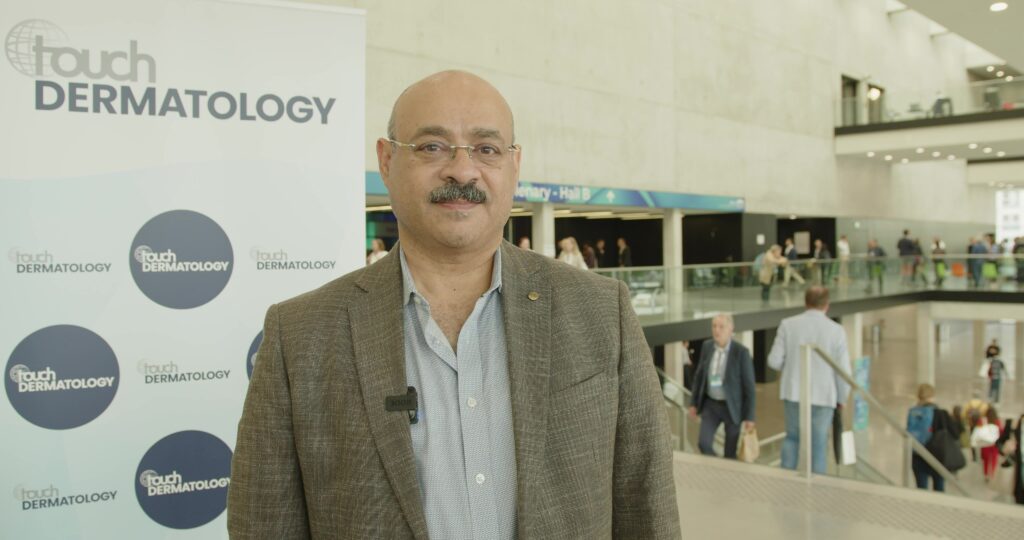Touch Medical Media coverage of data presented at EADV 2023:
Aesthetic medicine research has grown dramatically in recent years driven by technological advances, and novel treatments for skin diseases and cosmetic procedures. In this interview touchDERMATOLOGY spoke with Prof. Leonardo Marini (The Skin Doctors’ Center of Trieste, Italy) to discuss the latest developments and future directions in aesthetic medicine, and most recently the combined treatments across different dermatological indications.
The presentation ‘Combination treatments in aesthetic medicine.’ (Session ID D4T06.4) was presented at EADV 2023, Berlin, 11-14 October 2023 #EADVCongress.
Questions
- What recent advancements in aesthetic medicine have been the most promising? (0:22)
- What is the rationale for combining treatments in aesthetic medicine? (1:13)
- What do you see as the future direction of aesthetic medicine? (2:57)
Disclosures: Leonardo Marini has nothing to disclose in relation to this video interview.
Support: Interview and filming supported by Touch Medical Media Ltd. Interview conducted by Victoria Jones and Katey Gabrysch.
Filmed in coverage of the EADV Annual Meeting.
This content was developed by Touch Medical Media and is not affiliated with the European Academy of Dermatology & Venereology (EADV) or the congress.
Click here for more content on aesthetics & for further EADV 2023 highlights visit here.
Transcript
I’m Prof. Leonardo Marini, I’m a Dermatology Surgeon, and the chairman of the task force which formed dermatology for the European Academy of Dermatology. I have dedicated over thirty-five years to surgery in the field of dermatology.
What recent advancements in aesthetic medicine have been the most promising?
The demand for aesthetic medicine is surging as people strive for beauty while aging gracefully. Our offerings are diverse, ranging from combination techniques and lasers to topical treatments. A recent significant discovery is the role of the intestinal microbiome in overall health. Effective control of the microbiome enhances the body’s functionality, thereby improving the outcomes of our treatments.
What is the rationale for combining treatments in aesthetic medicine?
I like to use combination techniques. Relying solely on one method risks overextension, whereas combining different techniques distributes the risk. A single session might include lasers, botulin toxin, chemical peels, and photodynamic therapy, will each requires careful skin analysis. Modern dermatologists must base their decisions on more than just clinical evaluations; skin analysis tools are crucial for identifying patient-specific issues. Informed patients are more willing to proceed with treatments, understanding the potential risks and benefits.
Patients generally prefer multiple treatments over a single, comprehensive one. They opt for shorter downtimes and minimal risk, seeking gradual improvements. Our goal is to guide patients through the process of aging beautifully.
What do you see as the future direction of aesthetic medicine?
The future direction lies in highly personalized treatments. Each patient’s unique response necessitates regular monitoring of the effects of combination treatments. This approach fosters patient trust and satisfaction, as they witness continual improvements both in the mirror and through diagnostic devices. Documenting treatment progress is essential for reminding patients of their improvements and reinforcing their trust in ongoing treatments.



